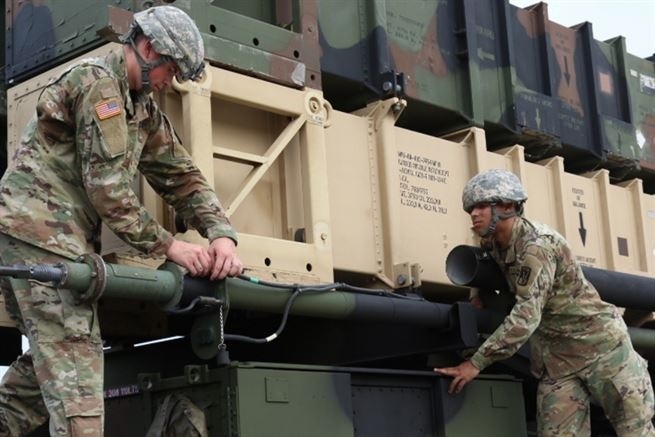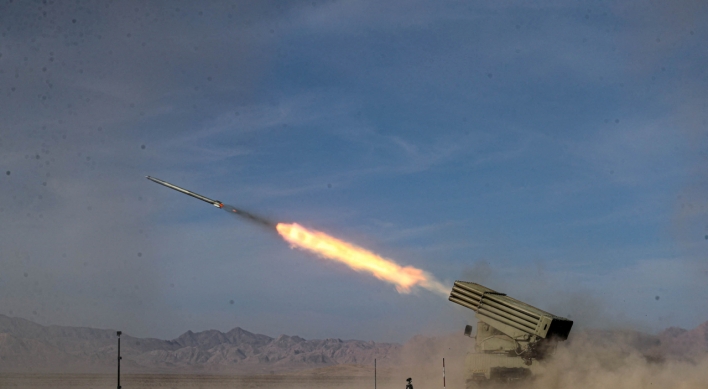US starts joint anti-missile drill in Indo-Pacific
By Choi Si-youngPublished : March 30, 2021 - 14:49

The US military held its first joint missile defense drill in the Indo-Pacific region involving four US bases in South Korea, Japan, Guam and Hawaii, the US Army said.
The Korean military confirmed Tuesday that the 35th Air Defense Artillery Brigade in Osan, Gyeonggi Province -- a subunit of the Eighth US Army that commands 28,500 US troops here -- joined the 38th ADA Brigade in Japan, the E-3 ADA THAAD unit in Guam and the 94th Army Air and Missile Defense Command in Hawaii.
The two-week exercise, which ended March 12, was made public weeks later amid rising military tensions in the region. North Korea recently fired short-range ballistic and cruise missiles into the East Sea between Korea and Japan.
“Being able to simulate real-time events is a great way to test our response capabilities, and our ability to communicate on bilateral networks,” said Col. Matthew W. Dalton, commander of the 38th Air Defense Artillery Brigade in Japan.
Military watchers speculate that the US is accelerating efforts to mount an improved multilayered missile defense system to counter missile threats from North Korea and China.
“The US military has said it would work to promote the so-called interoperability of its anti-missile shields, such as the Patriot and THAAD,” said Shin Jong-woo, a senior analyst at the Korea Defense and Security Forum.
The Terminal High Altitude Area Defense system takes down missiles at high altitudes while the Patriot intercepts threats flying low. THAAD has much longer-range radars than the Patriot, so it can scan more quickly to determine where the threat is suspected to appear in the sky and thwart it.
Shin said the US military could have been looking at ways to use the powerful radars to cover a broader range of altitudes – from low to high – to neutralize all hostile fire.
Seoul’s Defense Ministry said it is regularly holding its own missile defense drills and that there was nothing to comment on concerning the latest US drill. Washington did not ask Seoul to join the exercise, a senior Defense Ministry official said.
By Choi Si-young (siyoungchoi@heraldcorp.com)
The Korean military confirmed Tuesday that the 35th Air Defense Artillery Brigade in Osan, Gyeonggi Province -- a subunit of the Eighth US Army that commands 28,500 US troops here -- joined the 38th ADA Brigade in Japan, the E-3 ADA THAAD unit in Guam and the 94th Army Air and Missile Defense Command in Hawaii.
The two-week exercise, which ended March 12, was made public weeks later amid rising military tensions in the region. North Korea recently fired short-range ballistic and cruise missiles into the East Sea between Korea and Japan.
“Being able to simulate real-time events is a great way to test our response capabilities, and our ability to communicate on bilateral networks,” said Col. Matthew W. Dalton, commander of the 38th Air Defense Artillery Brigade in Japan.
Military watchers speculate that the US is accelerating efforts to mount an improved multilayered missile defense system to counter missile threats from North Korea and China.
“The US military has said it would work to promote the so-called interoperability of its anti-missile shields, such as the Patriot and THAAD,” said Shin Jong-woo, a senior analyst at the Korea Defense and Security Forum.
The Terminal High Altitude Area Defense system takes down missiles at high altitudes while the Patriot intercepts threats flying low. THAAD has much longer-range radars than the Patriot, so it can scan more quickly to determine where the threat is suspected to appear in the sky and thwart it.
Shin said the US military could have been looking at ways to use the powerful radars to cover a broader range of altitudes – from low to high – to neutralize all hostile fire.
Seoul’s Defense Ministry said it is regularly holding its own missile defense drills and that there was nothing to comment on concerning the latest US drill. Washington did not ask Seoul to join the exercise, a senior Defense Ministry official said.
By Choi Si-young (siyoungchoi@heraldcorp.com)












![[Today’s K-pop] BTS pop-up event to come to Seoul](http://res.heraldm.com/phpwas/restmb_idxmake.php?idx=644&simg=/content/image/2024/04/17/20240417050734_0.jpg&u=)





![[KH Explains] Hyundai's full hybrid edge to pay off amid slow transition to pure EVs](http://res.heraldm.com/phpwas/restmb_idxmake.php?idx=652&simg=/content/image/2024/04/18/20240418050645_0.jpg&u=20240419100350)

![[Today’s K-pop] Zico drops snippet of collaboration with Jennie](http://res.heraldm.com/phpwas/restmb_idxmake.php?idx=642&simg=/content/image/2024/04/18/20240418050702_0.jpg&u=)